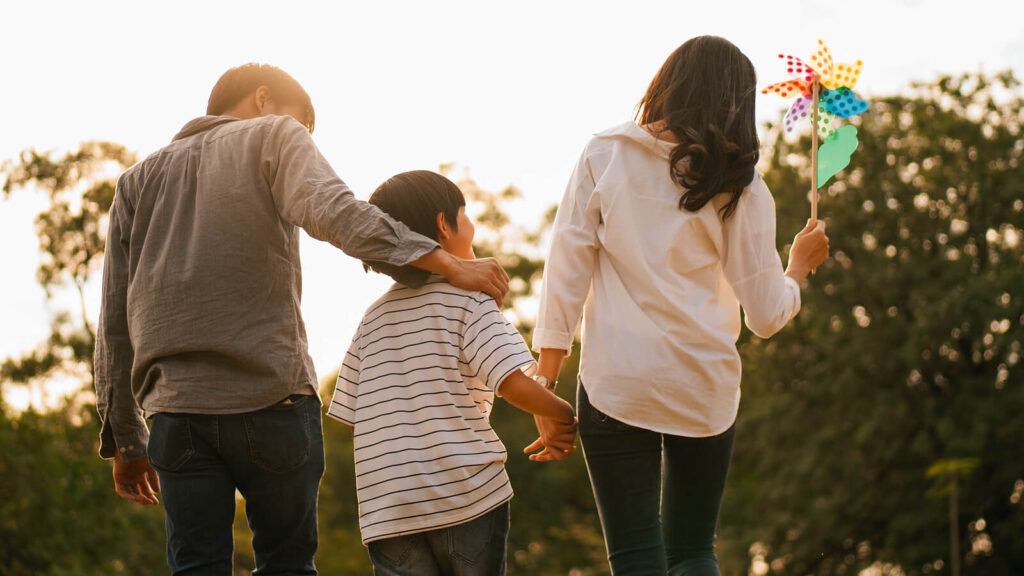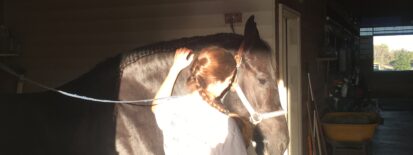A Brief Review of Top-Down Therapy Approaches & Understanding Children
Generally, when therapists are working on their education, we are trained developmentally from ages 5 years and beyond. Essentially, this allows for psychological testing at this age. Many of the young adults and teens that therapists experience often are dealing with issues, that now as a more seasoned trauma therapist would have been better to have taught the parents as a preventative measure. That includes building confidence, self-esteem, and resiliency for example.
Here is the thing about understanding children…

We as adults need to understand how development happens. We need to be able to interpret what the infant is experiencing. It would be easier if they came with a manual to understand children. Think how easy parenting would be if kids were born with perfect communication skills. If they cannot get on the couch then they could just tell you what is going on. We have to work to interpret their behaviors through actions and how fast they move. So look for agitation, calmness, and distress, to seek their level of comfort and safety.
Brain Development and Resiliency
The decade of the brain. There was this huge tone that came out called neuron from neurons to neighborhoods where the government did a study. They looked at how to develop our human beings through resiliency, through the model. Looking at brain development, it was called from neurons to neighborhoods. All of this was coming out in front in the 1990s, which was known as the decade of the brain. And that’s when the different types of research and brain scanners came online. Since then there was just a ton of focus on the brain in a new way.
In LA, there were so many people studying this, that we were able to form study groups and teams. So Monica Delahooke was on a team, for example, with people who were occupational therapists, and developmental pediatricians. Physical therapists, educators, mental health. And so we would look at a child.
Through this research, clinicians and practitioners looked at people through the lens of their individual differences in their sensory processing. Finding how important it was to help them feel more comfortable in their bodies. As well as the way their bodies were taking in information and moving in response. Which leads to the challenging behavior decreasing.
What is the theory of constructed emotions?
The lab of Dr. Lisa Feldman Barrett is discovering a new neuroscience-based theory called the theory of constructed emotions. Essentially, they are looking into the neuroscience of how we experience emotions. How that happens is so interesting because it has to do with how our brain predicts what’s going to happen based on our past experiences. Plus what’s going on inside of our bodies.
That’s a process known as interoception, so feedback from literally inside of our body. That is feeding up to our brain, giving us a basic sense of calmness or agitation. As well as positive feelings or negative feelings. These are coming up from both the inside of our bodies and how we experienced the outside world through our sensory systems. So all of a sudden, we have the idea of sensory processing that isn’t just relegated to a sensory processing disorder or certain children with over-reactivity. It’s all of us. The only way any of us understands the world is through what’s going on inside our gut, inside our bodies.
Understanding our bodies helps us understand children.
Essentially our whole body, not just our gut affects how we’re taking in information. Then our brain mixes that with all of our aggregate past experiences and makes a prediction for us as to how we’re going to react in any given situation. It really is kind of mind-boggling if you think about its implications. For our children, for example, our goal then becomes to help them predict better. Help them predict that their world is a safe place.
Let’s just say a child who all of a sudden develops a phobia or panic attack. We know that because of some conflict that child’s brain is now predicting threats and danger. This is happening even when that child is physically safe, ostensibly safe. However, what doesn’t matter is our internal experience. Of how we feel on the inside. And so then we go to all these nice things that we can do to help our bodies feel safer and help coach parents on what are those things about your child’s system that helps them calm down?
How do you use your relationship to help what we call co-regulate that little nervous system into feeling better, feeling safer, and communicating with you when they’re in distress.
Using brain Body Parenting is what we really need to do to become observers of our own nervous systems and our own internal state. On a relative scale of feeling calm and alert to feeling over-excited, agitated fight or flighty kind of, or maybe just so exhausted, we’re checked out. So understanding on that continuum where we are at any given point in time and when our, where our child is. And once you do that, then you can kind of do a roadmap.
So if you see a child who is upregulated and overactive in what we call that fight or flight response, then our first goal is to use our relationship. To use our own calm, nervous system to help calm the child down. And if you’ve ever tried to calm a child down by lecturing them or giving them a timeout or dangling a goodie in front of them, you’ll know that if that child is truly in distress, that doesn’t work very well. What works well is our own lending to them, our calmness lending them our what we call co-regulation.

Are you calming the child down, or teaching them to internalize their feelings?
If, if it works, you can, you can have a behavior change, but that behavior change may not be calming the child’s nervous system. It may be revving it up. So if a child is scared, for example, and again this isn’t to put any guilt on parents. Because we’ve all been there and it is so hard but if a child is blamed or reprimanded, or if we overpower a child and that behavior stops, it might be because they’re going in what we call the blue pathway, the dorsal vagal pathway, where they are protecting themselves and kind of shutting down a little bit.
So we want to remember that human nervous systems thrive on cues of safety, not cues of threat. Research shows that the pathway to helping understand children in distress is by lending them another nervous system, which is us. It’s important for us to witness their pain while of course not allowing them to harm themselves or others. We are needed to show them they are not alone.
Working Together To Identify the Stimuli
The purpose of top-down approaches is to expose the body to necessary stimuli in a safe environment. Rather than in an out-of-control human way, which causes harm. The bottom-up behavior is different than the mediated. Thinking about it, I’m going to do something on purpose right now and test out the limits of my power, which kids do, but that’s a big difference between that and a child who was a red face. Snotty nose, heart rate is very irregular, sweaty hands, you know, falling over themselves. This is a sign of autonomic distress. At this moment, parents need to be able to say, we will get through this together.
It can be challenging for both the child and the parent to begin to deregulate in order to calm the nervous system, but this is necessary to protect the safety of the child. The truth is that parents get exhausted and as a trauma therapist and parent, I have been there. You may be working with young toddlers who are straddling the line of wanting some independence, but as parents, we need to recognize they are still learning what they need. Therefore, I think mindful self-compassion for ourselves as caregivers is necessary, while also supporting the emotional and social needs of your kids must be maintained.
A Continuation of Brain and Body Connections
The truth is we are born very immature compared to other mammals. We don’t come out developed and with a sense of survival. We rely on caregivers for support till we are able to branch out. The truth is that kids’ brains are wired to understand the world they grow up in. Caregivers shape this for them and then help to meet their needs. In order for infants to begin developing resilience in life, we have to begin to develop responsive care for infants.
Understanding Children by Developing Responsive Care
That means when there is a need from the child, we are able to attend to the need of the child. The second important need is to make as accurate enough a guess as we can as to what is going on. Research indicates that responsive care is highly correlated to infants who get to start to develop better self-regulation because they get to believe that a need as they have it, is going to be met. Although it is something that is recommended, Mona Delahook, states that “ I don’t recommend letting babies cry”.
Why you may ask? As young kids and babies learn about regulation, if you allow a child to cry when they are in need of food, we are sending the message about how well they should be taking care of themselves. The goal of the caregivers is to be responsive to the child and as they grow, gradually we begin to do less and less. Then the baby turns into a toddler and begins to develop techniques to care for themselves.
The truth is that the way babies begin to develop is slowly but surely. They learn to drink, move, and look around the room. Soon enough they become independent its just over time. The things that irritate parents are part of the child’s development. That includes tantrums. It requires patience on the part of the parent to recognize that this isn’t an area for discipline but a time for patience as the child grows. The child needs to learn self-regulation. The attuned adult will recognize this, not judge, and teach them to help themselves regulate emotions.
Looking At The Nervous System Leads To Understanding Children
What is often missed from preschoolers is that their behaviors are not done out of a desire to misbehave, but in fact are a stress response. This comes from the nervous system which is telling the child that something is wrong or unsafe. This is something that Dr. Porges developed in the polyvagal theory which is called neuroception or a safety sensor. We all have a safety sensor and sometimes it’ll go off on things that are invisible to us.
For the child and we don’t know why they’re crying or fussing or hitting, but something has clicked. And right now they have moved into that nervous system that is moving a lot of yelling or screaming. And it’s it doesn’t ask for their consent first. Truly the child recognizes it is a feeling, it’s not mediated. The child is not reacting because they are going to do this right now because they are mad. It’s more of the body moving in a way to feel better. So if you ask that toddler, why they did it, they will have no idea why they’ll makeover because humans do. Unfortunately, for a parent demanding answers, the child will concede because they want to answer you, but they may not understand what is going on.
Parenting is anything but easy…
Parenting is not an easy feat. It is hard work and pulls you in every direction physically, emotionally, and mentally. Especially with the shift to working from home and the impacts of the pandemic. Parenting has become an extra challenge for new or seasoned parents.
Movement as a way to manage a threat
The body uses movement. It is a platform that our brain and body use to manage stress and its felt at a primitive level. Our bodies know how to manage issues on the autonomic level. If we stop challenging behaviors they often disappear on their own. Rather, when something is untraditional, we often think we need to pathologize everything. What we need to learn to do is help these children understand what they are feeling rather than forcing them to do this or comply with that.
How do we start helping and understanding children then?

What is needed from parents is to collaborate with the child or to help them thrive. Rather than assuming the worst from the child, seek to understand the response. We need to assume good intent rather than assuming that the child is trying to get one over on you. Truly, it is our inner cultural DNA that makes us feel the need to control our child’s reactions and behaviors. We have the idea that if a child was not disciplined enough, they will grow into children who are out of control.
It comes from years of ideas that children should be seen not heard. Unfortunately, this ideology still floats around today. In fact, this is further perpetuated in our education system which is very behavior-oriented. However, when we are trying to always ensure that a child is compliant, we often ignore what is motivating the child’s behavior internally and from a body-based perspective. If we do this, we are ignoring the activation in the nervous system and teaching kids to ignore or internalize their stress, anxiety, and troubles. This is even more concerning when we consider a child who has experienced trauma, a child, with a sensory processing disorder, or other neurodivergent presentations.
We are all on a journey to thrive and survive in a way where we feel safe in our own bodies. Our autonomic nervous system is here to make sure we are safe. And the best way to instill this in children is to help them understand how they are perceiving the world. We need to not judge them, and begin to use their bodies as their own roadmap, to help them develop a sense of safety and security and eventually flexibility because I think in the end resilience kind of equals flexibility.
The truth is flexibility is key
As professionals and parents, we need to become more flexible especially as we are adapting to a world in COVID and post COVID. There has been such a focus on structure, rigidity, and force. However, this kind of life is not sustainable. Therefore we are not here to put kids into boxes. If we do this we are limiting and ignoring the essence of who they are. Trying to control the development of our children can contribute to toxic stress. This can even be inadvertently by trying to make them just, be quiet, be still and not do what their bodies want to do naturally.
What is important for parents to take away about understanding children…
We all get impatient from time to time. We shouldn’t allow ourselves to be weighed down with the shame and guilt of wondering how your actions are impacting your child’s expression of emotions. Many parents believe that if a child doesn’t obey them, they are not good parents. If they comply, then parents believe that they are being effective in their methods. We know that as parents, you may feel judged in this culture by everyone in how you choose to parent.
When we understand that our best efforts really aren’t simply focused on our child’s behaviors and on the way your child’s body and brain processes integrate and experience their world and we really have a new roadmap and it’s pretty exciting because we can then be, we can be sturdy, strong parents and still be, you know, raise children with the values we want to have, but also having awareness of their emotional life, hopefully in a way that maybe other generations never had. If you take anything from this blog, take this, we need to give space for our children to understand and process their feelings, but as parents, we are not perfect and we need to give out children grace and compassion as well as ourselves.
Find a Trauma Therapist Near Me Today!
Understanding children starts with looking below the surface. While we can learn a lot from trauma blogs and trauma podcasts meeting with a qualified therapist can provide even more insight. If you are ready to get help understanding children and learn more about the top-down and bottom-up approach talk to a trauma therapist. Most therapists off a consult before you schedule an appointment to make sure it will be a quality match.
Finding a therapist who can help you with understanding children and has specialized training in trauma recovery can make a huge difference. Additionally, taking the steps to address the trauma from your childhood can improve your current relationships. Therapy can help. Reach out for the helping hand of a trauma therapist. I know there are many caring and skilled trauma therapists out there who want to help. Find A Trauma Therapist near me by clicking here.




